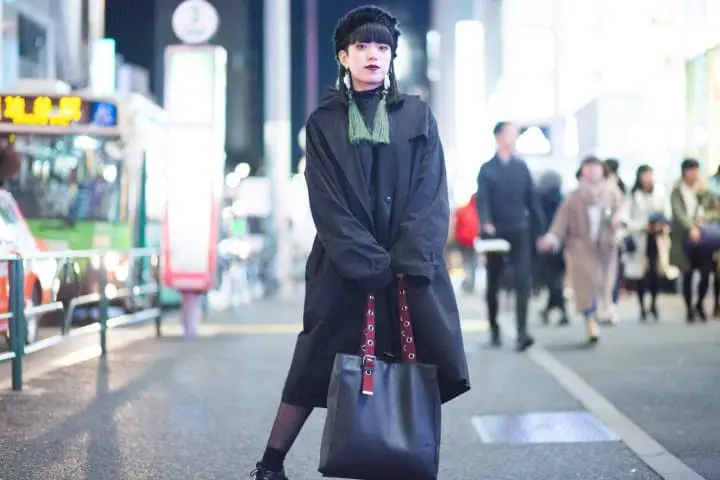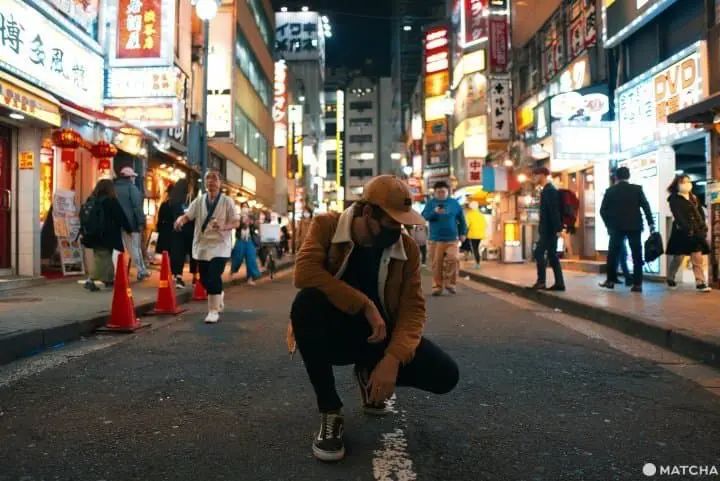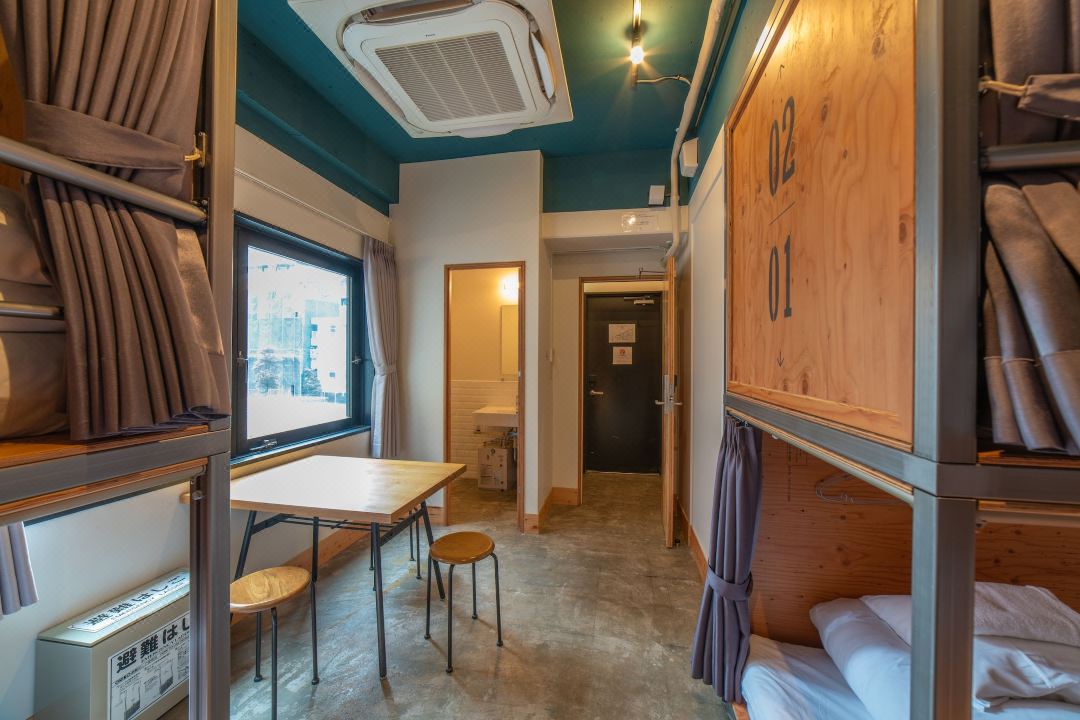Getting Into Japanese Street Fashion - 9 Must-Know Apparel Brands

Despite its constant change, Japanese street fashion remains the pinnacle of the fashion-forward. Start your journey discovering your aesthetics with these nine popular Japanese streetwear brands.
Begin Your Style Journey with Iconic Japanese Fashion Brands

Picture courtesy of Dick Thomas Johnson
Ask any person to describe Japanese street fashion, and they'll start with words like "crazy" and "colorful." If they have some knowledge of Japan, they might list old styles like visual kei, ganguro, or lolita. While those styles still exist today, they’re no longer at the forefront of Japanese street fashion. Walk down the streets of Harajuku today, and you’ll hardly see anyone dressed in such eye-catching attire anymore. However, Japanese streetwear is still around and is very much alive.
This article provides a basic background on Japanese street fashion, and nine prominent brands to help jumpstart a new style journey for those interested in these iconic looks.
Japanese Fashion: More Lifestyle than Fashion

Picture courtesy of Dick Thomas Johnson
Unlike the West, where fashion is more about making a statement, fashion in Japan is closer to a lifestyle choice. People heavily into their respective fashion subcultures know it inside and out, their clothes relate to their interests, their friends have the same style, and they don’t deviate too far from what makes them comfortable.
Instead of buying into all the trends of Instagram, Japanese street fashion encourages experimentation of colors and silhouettes. Above all, Japanese street fashion requires committing wholeheartedly to your style.
Japanese Fashion Brands to Try

Picture courtesy of Dick Thomas Johnson
Plunging into Japanese street fashion is much easier than it looks. The first thing you need to do is shop how the locals do. While giant conglomerates like H&M and Zara in Japan are good to rely on for some basics, you won’t find too many things resembling authentic street fashion. Below are nine stores to get you started on your fashion journey.
1. UNIQLO - Smart Japanese Basics
As the most prominent retail brand in Japan, UNIQLO (Uniqlo) quickly grew into an international brand competing with the likes of Zara, H&M, and Forever21. Started in Yamaguchi Prefecture, Uniqlo changed Japanese fashion dramatically through the 20-year economic slump in the 90s. Uniqlo doesn’t advertise itself as a fast-fashion conglomerate pushing out styles similar to those one would find on the runway.
Instead, Uniqlo offers consumers affordable and functional clothing that can be worn for almost any occasion. The clothes are made from high-quality fabrics and their built to last through multiple wears.
While the Uniqlo style deemphasizes big brand names on their clothing, there are opportunities throughout the year to pick up some collaborative pieces with big names such as Billie Ellish, Pokemon, and Keith Haring. Uniqlo stores can be found countrywide, but we especially suggest visiting the Uniqlo store in Ginza, filled with 12 floors of Uniqlo apparel.
2. HARE - Trendy and Quality Pieces
If you’re a fan of the avant-garde styles of Yohji Yamamoto, then HARE is a great starter brand to try. While the pricing is considerably cheaper than the famous designer, you can still find high-quality pieces to test the waters with.
Taking elements from traditional Japanese garments, HARE creates flowy silhouettes that can be layered on top of each other to create cohesive looks. They focus mostly on using muted colors like white, black, beige, and gray, and all of their pieces have an oversized look to them. There are a few stores sprinkled around the Kanto area but HARE on Cat Street in Harajuku is popular with the locals.
3. Bape - Classic Japanese Streetwear
Established in 1993 by Nigo, a fashion designer with deep connections in the American and Japanese fashion industry through his works with Hiroshi Fujiwara and Pharell Williams. Bape has remained the symbol of Japanese street fashion for over 20 years. Bape, short for “A Bathing Ape” was one of the pioneers of the underground Harajuku style, Urahara, in the ’90s.
Although the hype for Bape has died down considerably since Nigo left the company, Bape remains an icon among streetwear aficionados globally. The Bape location in Shibuya is one of the longest standing stores for the brand with exclusive items released weekly.
4. 6%DokiDoki - the Embodiment of Kawaii Culture
If you're a fan of Kyary Pamyu Pamyu and other kawaii icons, then 6%DokiDoki is the perfect place to start. Created by artist Sebastian Hasuda, 6%DokiDoki has been bringing iconic kawaii culture to Harajuku since 1995. Although the age of exuberant decora fashion has come and gone, the store is still alive and well.
The store isn’t hard to miss, as it is in the middle of Harajuku, and its brightly colored decorations and shockingly cute aesthetics are prominently displayed in the shop windows. Here you can find an array of accessories, clothes, and trinkets to fill your kawaii soul.
5. PUNYUS - Fashion Available in Plus Sizes
Japan is notorious for its small clothing sizes, without much room for larger men and women. However, PUNYUS, created by singer, comedian, and actress, Naomi Watanabe, provides excentric colorful Japanese clothing to plus size women in Japan. PUNYUS can be found in the iconic Shibuya 109.
6. Laforet Harajuku - Iconic Brands in One Place
No longer at the height of prominence like it was in the ’90s, lolita fashion still holds a special place in the hearts of many. LaForet Harajuku serves as a good starting point for anybody looking to turn themselves into a princess. Angelic Pretty targets the more traditional sweet lolita type while Alice and the Pirates focuses on gothic lolita aesthetics.
Brand new lolita dresses can cost a minimum of about 20,000 yen, so if you’re looking for a starter brand that gives the same lolita feel but with a more modern look and wearability, try Jane Marple, which still pulls influences from the Victorian era.
Hotels near Laforet Harajuku
7. Closet Child - Second Hand Lolita Brands
Tokyo boasts many second-hand shops––however, not all thrift stores are made the same. Closet Child stands out well above the rest. Closet Child has an assortment of Japanese name-brand items, ranging from gothic to lolita, at severely reduced prices. Closet Child is well known among locals as a spot to break into your desired subculture.
8. Kinji - A Must-Visit Thrift Store
You can’t visit Japan and not go to at least one thrift store. Kinji is one of the biggest thrift store retailers in Japan and is known for its expansive variety of clothes waiting to be discovered.
Items are grouped by their sub-section (the 80s, 90s, lolita, dresses, and more), making it easier for customers to find something that piques their interest. Kinji is extremely popular among locals, and if you're lucky enough, you might even see an influencer.
9. New York Exchange Joe
Another can’t miss thrift store in Tokyo is New York Exchange Joe, which sits in a refurbished Japanese bathhouse in Shimokitazawa. It is popular with local hipsters for its exchange and buy policy. Bring in your clothes to sell or receive store credit, which can be put towards your next purchase from the store. New York Exchange Joe is known for having a bit more variety and upscale clothing than Kinji, so it’s worth taking a look.
Experience Japanese Street Fashion

From the outside, Japanese fashion can seem a bit intimidating at first––especially if you don’t know where to start looking. These are only a handful of stores, but, if you spend one day exploring Tokyo, you're guaranteed to find multiple places that cater to your aesthetics.
Main image courtesy of Dick Thomas Johnson











































![[Northern Okinawa] 4 Recommended Cosmos Fields in Okinawa | Sunflowers and Cherry Blossoms in the Same Season!](https://resources.matcha-jp.com/resize/720x2000/2024/08/12-192028.webp)



![[Corporate Visit List] Near Kansai Airport! Discover Japan’s Technology and Business Philosophy through Industrial Tourism](https://resources.matcha-jp.com/resize/720x2000/2024/12/13-215168.webp)